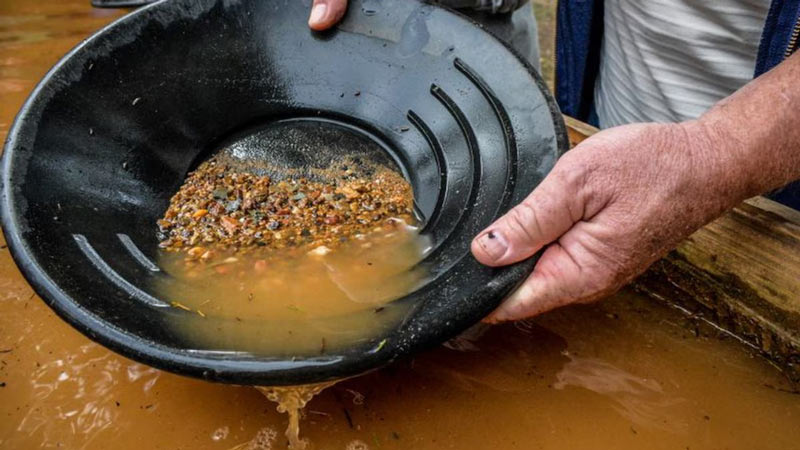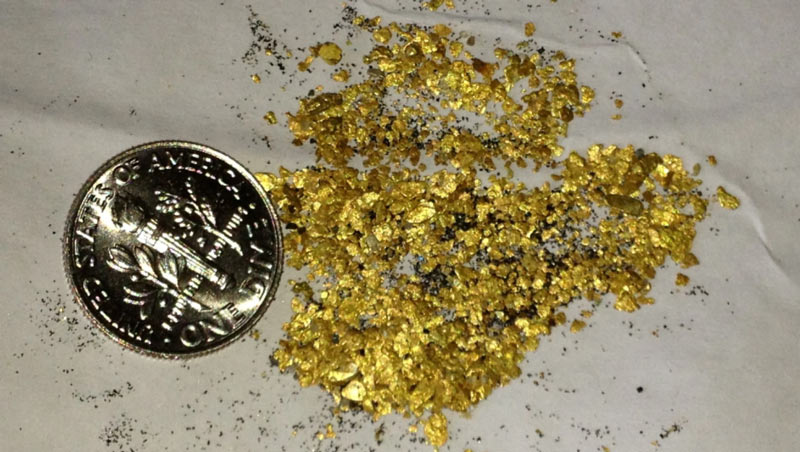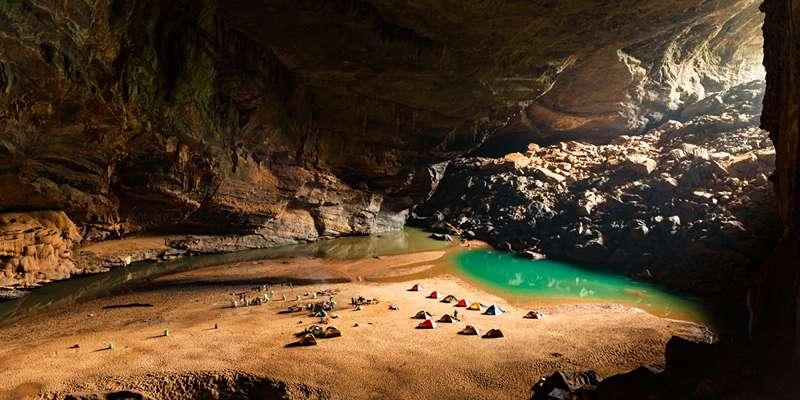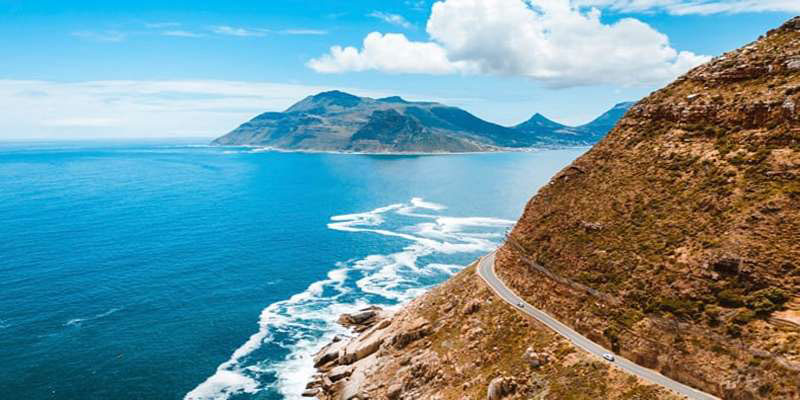Are you looking for something different to do this weekend? If yes, why not try out California's gold rush and head out panning for some of the precious metal that started it all so many years ago?
From its history-filled streams to the majestic Sierra Nevada Mountains, there is still an abundance of places where enthusiasts can find lucrative gems in these hills. Whether you are a novice or an experienced prospector, we've rounded up the best spots in California where you can pan out for glittery treasures and make a mighty discovery!
What Is Gold Panning and Where Can You Do It in California

Gold panning is an age-old practice, dating back to the California Gold Rush of 1849. It involves using a special pan to search for and extract gold flakes from the soil in rivers, creeks, and other waterways. Panning can be done both recreationally and as a way to make money by selling any gold found. If you'd like to try it, there are still plenty of places in California where you can pan for gold.
One popular spot is the Jamestown Gold Panning Area near Yosemite National Park. Here visitors can rent pans or buy them onsite and search the shoreline of Woods Creek for flakes of gold. This spot is especially great for experienced panners, as the creek offers a higher concentration of gold than other rivers.
Another good choice for panning is Columbia State Historic Park in Northern California. This one-time mining town was founded during the Gold Rush and still has plenty of hidden treasure to be uncovered. Here visitors can rent a pan and pick up tips from experienced miners while they search the area for gold around the middle fork of the American River.
A Guide to the Best Places for Gold Panning in California

California is known as the Golden State, and it's no wonder why. It has a rich gold-mining history, with many great spots to still find that precious metal today. Whether you're looking to pan for gold in remote riverbeds or explore some of California's public lands, here are some of the best places to pan for gold in California's hills.
1. Feather River: Located east of Oroville and south of Quincy, it is a great spot to find gold due to its proximity to one of California's historically productive mining districts. You'll need a permit from the California Department of Fish and Wildlife to pan along the banks of the Feather River.
2. American River: The American River is a great spot for gold-panning due to its abundant sources of placer gold. It's located near Coloma, where James Marshall discovered gold in California in 1848. You can also find gold in the shallow tributaries of the South Fork American River.
3. Mokelumne River: The Mokelumne River is located near Jackson, California, and is home to some of the richest placer deposits in the state. It's a great spot for beginner panning and more advanced prospecting. You'll need a special permit if you plan to pan along the banks of the river.
4. Yuba River: Located near Nevada City and Grass Valley, the Yuba River is home to some of California's most productive gold-panning sites. It's ideal for both surface and underwater prospecting. The river is also known for its high mercury levels, so take all the appropriate safety precautions if you plan to pan here.
5. Klamath River: Running from Happy Camp in Siskiyou County to the Pacific Ocean near Crescent City, the Klamath River has been a gold-panning spot for over 150 years. The river is known for its wealth of large nuggets, so this is the place to go if you're looking for serious finds.
The History of Gold Mining in California
California is known for its gold rush heritage; many still visit early prospectors' sites to find their fortune. The state was founded during the 1848 California Gold Rush when hundreds of thousands moved to the region searching for gold-bearing areas. The population of California increased by 500% within a few short years, which helped to spur the development of towns and cities throughout the state.
Many places in California still exist where you can pan for gold. From shallow rivers to steep hillsides, these sites offer the perfect opportunity for amateur prospectors to find their piece of gold-rich treasure. Here are some places you can still pan for gold in California's hills:
- Grass Valley/Nevada City: These two towns are located near the foothills of the Sierra Nevada Mountains and offer a great environment for gold prospecting. The American and Yuba Rivers flow through this region, providing plenty of opportunity to find gold nuggets in their gravel beds.
- Coloma: This small town was the site of the first gold discovery in California during the 1848 Gold Rush and is still a great place to look for gold today. The nearby rivers contain plenty of fine sand and gravel, allowing prospectors to find flakes and nuggets when they use their pans properly.
- Jamestown: Located in the foothills of California's Central Valley, Jamestown is another great spot for gold panning. The local streams offer plenty of water to search through, and you may even find some sizable nuggets if you are lucky!
- Placerville: This town was founded during the 1848 Gold Rush and is still a great place to find some gold today. The nearby streams offer plenty of opportunity to search for nuggets in the gravel beds, and you may even have luck panning the small creeks that run through this region.
How to Prepare for Your Gold-Panning Adventure
If you're planning to go gold-panning in California, there are a few things you should do to prepare. The most important thing is to research the location and make sure you understand any regulations or guidelines that may be in effect.
At your destination, it's also important to have the right equipment. A lightweight, plastic-bowl pan is the best way to pan for gold. This will help you move quickly and easily over large areas of water. You'll also need a shovel or trowel to scoop out any gravel from the bottom. A set of vials and tweezers can also come in handy for storing small flakes of gold.
It's important to wear the right clothing for your gold-panning adventure. You'll want to layer up with breathable, water-resistant outerwear and sturdy boots that can withstand wet conditions. Remember a hat, sunglasses, and gloves for added protection from the elements.
Finally, remember to be respectful of the environment. Most areas require a permit to be legally panning for gold, so obey all the rules. It would be best to practice Leave No Trace principles and avoid disturbing or polluting waterways.
Essential Equipment Needed for Gold Panning
If you plan to try panning for gold, you must have the right equipment. To start, you will need a gold pan. These come in different sizes and shapes, so make sure to choose one that is comfortable and easy to use.
You will also want to bring a shovel, bucket, and mesh screen.
A mesh screen is especially important as it helps you sift out any dirt or other materials from the gold when planning for it. It's also helpful to bring a pair of tweezers and some glass vials in case you find small flakes of gold that need to be collected.
FAQs
How do I get started panning for gold?
First, you'll need to buy a gold pan. You can find them at most hardware stores or online retailers specializing in prospecting and mining equipment. Once you have your gold pan, you'll need to head to one of the many places in California where gold has been found historically. Research the area and obtain all necessary permits before heading out. Once you arrive, look for areas with running water, such as rivers or streams.
What should I bring with me when panning for gold?
Besides your gold pan, you'll want to bring a bucket or container for collecting any gold flakes you find. Consider bringing a pair of waterproof boots and a plastic scoop or shovel for digging in the streambeds and banks. A pair of tweezers can also help pick out tiny pieces of gold from the dirt. Finally, remember to bring plenty of drinking water and snacks!
What should I look for when panning for gold?
You'll want to pay close attention to the sediment in your pan and any rocks or pebbles. Gold appears yellowish-orange, so keep an eye out for any bits that stand out from the rest of the material in your pan. You may also want to look for black sand at the bottom of your pan, which can indicate gold is nearby.
Conclusion
I hope this guide has given a good overview of where you can still pan for gold in California's hills. As we've seen, there are several locations where you can try finding some of the state's hidden treasures.
Whether it is an old mining camp or an isolated stream, ensure you have the right equipment, are familiar with the rules and regulations, and have obtained the proper permits for the area. Remember to always respect nature on your adventure — do not leave any trash or damage natural resources.



